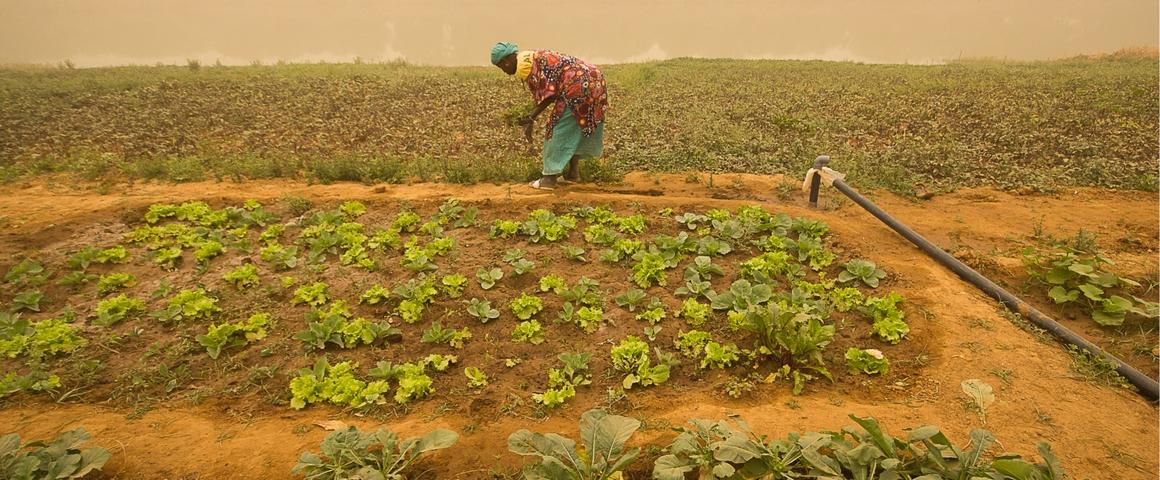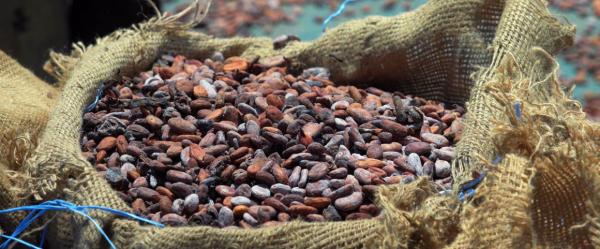Expert view 30 September 2025
- Home
- CIRAD news
- News
- COP28: towards the transformation of food systems
The transformation of agricultural and food systems in the face of climate change

With climate change, rainfall is becoming increasingly irregular. In Guédé, Senegal, a women's group has attempted to adapt by installing a so-called "Californian-type" irrigation system. This consists of a buried pipe connecting a motor pump to the top of a plot, and serves to reduce water losses and save on fuel © R. Belmin, CIRAD
The IPCC estimates that the food sector produces around one third of global greenhouse gas emissions. In return, climate change severely impacts food systems*, in particular agricultural production, which is facing increasingly violent climate events.
Beyond their status as contributors to and victims of climate change, food systems are now emerging as a source of solutions. Again according to the IPCC, appropriate practices could slash agricultural emissions by 75%, as well as improve the carbon storage capacities of soils and biomass in many territories.
The transformation of our agricultural and food systems will be on the agenda of debates at COP28, which will take place at the end of November in Dubai. This is an important development for this sector, which has long been disregarded in international climate negotiations. However, it must not detract from the crucial need to reduce our dependence on fossil fuels, which remains the priority to tackle climate change. There is no doubt that including agricultural and food issues in climate discussions is an opportunity to be seized in order to accelerate the necessary transformation of these systems.
Three levers: production, consumption and loss and waste
The first lever of the transition to more sustainable food systems is agricultural production. Action begins from the moment the species or crop variety is chosen: for cereal crops, for example, sorghum is increasingly in demand for its drought resistance. Similar initiatives are being developed in livestock farming, where agricultural research is now focusing efforts on local breeds, which are more resistant to heat, disease and under-nourishment, and feed on resources that have less impact on the climate. Simultaneously, CIRAD is advocating agroecology as a pathway to the transformation of food systems that is capable of addressing numerous global challenges: combating climate change and desertification, improving water management, restoring agrobiodiversity, and ensuring synergies between soil health and fertility and carbon storage, etc.
The second lever, that of consumption, implies making changes to diets and, in particular, reducing the consumption of meat and dairy products in the global North.
Finally, food loss and waste represent between 8 and 10% of global greenhouse gas emissions. By strengthening storage, distribution and food processing capacities in rural areas, post-harvest losses could be reduced in the global South. In the Sahel, for example, communities of grain producers are working to improve storage of their harvests. Bioenergy technologies, used to recycle biowaste, increase access to energy in rural areas and encourage processing of food products close to their production sites, which improves their preservation before marketing. Changes in consumer behaviour could also help to reduce food waste.
Planning mitigation in conjunction with adaptation
Responses to climate change in the agricultural sector are often separated into two opposing areas: mitigation and adaptation. However, solutions focusing on adaptation can in some cases contribute to increasing greenhouse gas emissions, while mitigation practices may compete with food security challenges. New approaches will therefore need to combine adaptation and mitigation strategies, while keeping in mind the objective of food security.
The transformation of our food systems will play out on several levels and will involve different sectors. Research, development projects, support for public policies: CIRAD is ready to help achieve this change. These objectives will also require adequate financial investment. Currently, only 2% of climate finance is allocated to the agricultural sector.
* Agricultural and food systems encompass all of the elements and activities linked to the production, processing, distribution, and consumption of food products.



























